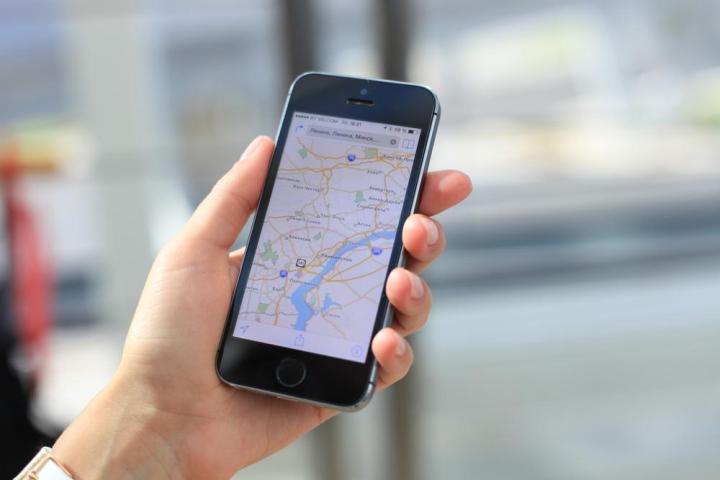
But Maps is about to get even better. According to the intrepid bloggers at Android Police, a forthcoming version of Google Maps will display road speed limits, let you quickly place food orders, and more.
Android Police dug deep within the code of the newest beta release of Google Maps for Android and, with a bit of developer elbow grease, uncovered new features both live and dormant. First and foremost, Google’s added support for Open Location Code (OLC), a standard developed by the Maps team in Zurich that provides a shorthand way of communicating location to third-party apps (87G8P2X3+HQ in OLC versus a latitude and longitude of 41°24’12.2″N 2°10’26.5″E, for instance).
OLC support isn’t new to Maps, per se — Google added it late last year — but older versions of the Android app handled them relatively clumsily — finding a location’s OLC involved searching for it on a desktop-only webpage. Now, finding a code is as simple as pressing and tapping on a place and scrolling to the bottom of its info card.
Another addition to Maps is a tweaked “arrival screen,” or the summary page with which you’re presented when you reach a destination. The newest version of the beta Maps app shows follow-up info it thinks you might find useful: You’ll see reviews for attractions nearby, plus the total time you spent driving there, the mileage you’ve covered, the average speed you drove, and whether or not you arrived on time. If part of the commute involves walking, a “walk the rest of the way” button will show you how long it’ll take you to reach your final destination from your prior means of transportation. Finally, new shortcuts quickly reset navigation if, say, you made a left turn when you should’ve made a right.
Some Maps features have yet to go public. Speed limits are one; future versions of Maps may show the speed limits of local roads as you’re driving, helpfully adjacent to a digital meter showing your car’s current speed. Somewhat oddly, Android Police wasn’t able to find evidence of a warning mechanism for those times you exceed the posted speed limit — presumably, that’s a responsibility (and liability) Google would much rather leave to drivers. And although the speed limit feature will enable for all Maps users when it launches, an option in the settings menu will provide speed demons a means of disabling it for good.
Tighter integration with food ordering apps also appears to be on the Maps horizon. Android Police discovered references to “placing” and “continuing” orders — extensions, it would appear functionality Google introduced in May of last year. Likely, they’ll serve as shortcuts to in-progress orders deliveries placed via Grubhub, Seamless, Eat24, Delivery,com, MyPizza, BeyondMenu, and Google’s other platform partners.
Just when speed limits and food ordering will go live remains a mystery, but it might not be long — Google historically doesn’t include unfinished code in publicly available apps. Assuming this release of Maps is no different, it could be a matter of weeks.
Editors' Recommendations
- Google Messages vs. Samsung Messages: Which app should you use?
- Google Maps got a major update, and people hate it
- How to use Google Maps
- Which Google One subscription is right for you? Google’s paid plans explained
- Google Maps is getting improved Live View navigation, more detailed map data


